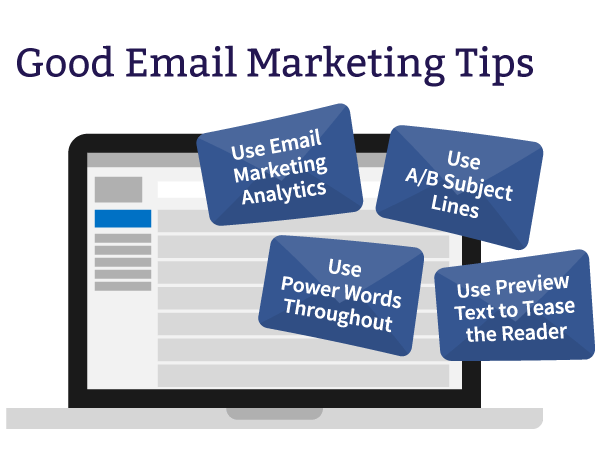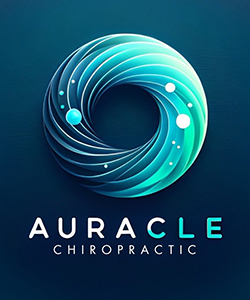Frontier Marketing
At Frontier Marketing, we firmly believe that our team is our greatest asset. Over the years, we have tirelessly sought to work with the best of the best—and that is exactly what we’ve done. We’ve assembled a crack team of passionate digital marketing experts to help take your business to a whole new level. But we bring more than just technical skill to the table. Our vibrant culture built upon trust, community, and dedication to growth is what makes us truly stand out.
Email Marketing for Small Business: Your Strategic Guide
Ray Tomlinson sent the first email in 1971. Since then, email has been a relevant and prominent force in marketing. These days, we use emails for much of our communication. It’s an essential medium that businesses use to connect and engage with their customer base.
An email marketing strategy helps small businesses communicate effectively with customers. Business owners also see a terrific return on investment through email marketing. For every dollar they invest in email marketing, they earn about 40.
How much do you know about creating a successful email marketing campaign, and why is email marketing important for small businesses? Read on to learn ideas and tips that’ll get you the most benefits of email marketing for small businesses.
By answering the following questions, this complete guide will show you how to create a winning email marketing strategy:
- What is email marketing for small businesses?
- How can you use email marketing for business?
- What are email marketing best practices for small businesses?
- What are email list building strategies you can use?
- What are the email marketing trends?
- What is effective email marketing content?
- What is the best email marketing design to use?
- When is the best time to send emails?
- What are good email marketing tips for small businesses?
- What are the best email marketing tools for small businesses?
What Is Email Marketing for Small Business?
Email marketing is the act of promoting a business through emails. Businesses often use emails to acquire new customers or reach out to existing customers. They do this by showcasing new offers, products, or services for their business.
Therefore, your email marketing strategy should focus on how to communicate with customers most effectively.
How Can You Use Email Marketing for Business?
How many emails do you receive a day? Of those, how many do you open? Probably the ones with something of value to you, right?
For this reason, your email marketing strategy should focus on providing value to your customers. If they open your email, they don’t want to feel as if they’ve wasted their time. They might mark your email as spam or send it to the junk folder.
Here are a few things you can use email marketing for:
- Links to articles or blog posts
- New offers
- Coupons
- Information about services or products
- Testimonials
- Current events and their relation to your business
- Loyalty rewards for existing customers
You want not only to entice the reader to open your email, but to act on it as well. Providing them with a valuable opportunity increases the chance that they will act. 
What Are Email Marketing Best Practices for Small Businesses?
Crafting the perfect email for your campaign might seem daunting at first. But all it takes is a little time and preparation. Like any other method of digital marketing, there are best practices to follow.
Savvy email marketers know how to implement these guidelines to reach more customers. If you follow best practices, you’ll be writing emails that convert in no time!
Keep It User-Friendly
The customer always comes first. When you write an email, remember to ask, “What value does this bring my customer?”
You may struggle to find something of value for your customers. It happens. In that case, you should think about what you, as a customer, not as a business owner, would want to see in an email.
Emails should enhance the customer experience. That is a basic rule to follow for all digital marketing areas. If the customer or user isn’t happy with your marketing, then that’s a bad practice to follow.
Build Email Lists Organically
Buying an email list might seem tempting, but that won’t do you any favors. Instead, you should build an email list of contacts organically.
Cultivate your list through social media, your website, and other methods. The customers who sign up for your email list through those channels are the ones you want. After all, they’re the ones who are most interested in your business.
Find the Right Frequency
Users don’t want to be bombarded with an avalanche of emails every day. But they also don’t want to be left out in the cold, either.
The number of emails you should send depends on who your customers are. Some clients may like receiving a daily email, while others may prefer a monthly schedule. The best way to find out what your audience likes is by asking them. You can do this in person or through an online poll.
Once you decide the frequency at which you’re going to be sending emails out, stick to it. Consistency is a key part of an email marketing strategy. As they become familiar with your schedule, your customers will start to expect your emails, and hopefully look forward to them.
Give Customers Something in Return
When customers sign up for your emails, they do so with the expectation they are receiving something in return. You’ve convinced them to sign up for a specific purpose. What is that purpose? Are they signing up for deals? Or maybe they want more information from blogs or articles. Whatever the reason, make sure you are delivering on that promise of value with your emails.

What Are Email List Building Strategies You Can Use?
What are the best ways to build up an email list? We mentioned social media and website channels before. But there are other ways to build up your list.
Here are a few of the best practices we use:
Create Personalized CTAs
Your call-to-action (CTA) is what gets customers to sign up. Personalizing your CTA has enormous benefits. It can dramatically increase your view-to-submission rate by 202% in some cases.
A personalized CTA also lets your voice shine through. People want to know the company and the people behind it. If your CTA is personalized, then the customer will feel more connected to you.
Use Well-Timed Pop-Ups
Pop-ups, in general, can be viewed as an annoyance. Therefore, timing is crucial when using pop-ups.
The best way to time pop-ups is by having them appear after a visitor has spent a significant amount of time on the site. This way, you know they already have some interest in what you’re offering.
Furthermore, you should make the pop-up interactive for the user. A well-timed pop-up with an interactive component, such as a survey or poll, is a very effective tool.
Place Your CTA Strategically
The number of places you can put your personalized CTA is endless. A strategically placed CTA offers more opportunities for customers to sign up.
A good place to have it is your email signature. When you reach out to new customers, it provides them with the option to click on it.
You can also place your CTA on the footer of your website. That way, readers will see it after they have finished reading a blog or webpage.
Promote It with Social Media
You can also build your email list organically through social media. If you have an established small business, then you probably have a following on one of your channels. Use those channels to tell everyone about your emails. You can do this by dedicating at least one post a month to promoting your email campaigns.

What Are the Email Marketing Trends?
So, you’re following the best practices of email marketing and building your list organically. The next step is to know what’s currently captivating audiences.
Despite popular belief, email marketing is not a relic of the past. Instead, it stays relevant because it keeps up with the latest trends.
Here are some trends to follow for your email marketing campaign!
Personalize Your Campaigns
Just like a personalized CTA brought you users, personalization will keep them. You can personalize everything from the name of the recipient to your own email address.
No one wants to see an email sent to a vague title like “Customer” or “Valued Customer.” They want to see their name.
Furthermore, they want to see the email come from a person. Therefore, using the standard “Do Not Reply” name no longer cuts it. So, we’d recommend getting personal with your addresses for your email marketing strategy, even if it’s simply the name of your business.
Segmented and targeted emails account for 58% of the revenue brought in by email marketing. Why? It helps give people information that is relevant to them. They feel a connection with a business when it offers them something they want.
Optimize for Mobile
Did you know that 61% of all emails are opened and read on mobile devices? Did you also know that 79% of mobile users purchase online through a mobile device?
A large demographic for small business owners consists of people who check emails on their phones. Consequently, mobile-friendly emails decrease the chance that the customer will exit before reading the email. You can achieve this through faster loading times and more interactive content for the user as well.

Use Video Content
Video is becoming more and more popular. It’s taking social media by storm and is a powerful force in email marketing for small business as well.
Using video in your campaigns enables you to give more information to your customers. After all, you can pack more information into a 15-second video than in two sentences. Video is also much more entertaining than text.
Videos can be anything from a quick testimonial to showcasing a product or service. You can even use short videos to tease longer videos for things like tutorials.
Integrate Social Media
Social media helped build your list; now, let your list return the favor. You can do this by adding links to your social media channels. That’s part of the interactive content users crave so much as well.
What Is Effective Email Marketing Content?
You’ve seen the latest trends, and you’re ready to start creating your own emails. But what content works better than most?
The best way to answer this question is to keep your readers in mind. Is the content you’re displaying valuable to them? If it is, you’re on the right track!
One way to keep it valuable to them is to go with the clear first, catchy second approach. We’ve heard of the saying, “All flash, but no substance.” You can write the most poetic and captivating copy, but it will fail if it doesn’t provide value to the customer. Make sure you’re getting right to the point.
The point also needs to be relevant. What does that mean? It means you need to decide on a goal and stick to it. If your email is for a new service, then the copy needs to reflect that. If it’s about current events, make sure the events are still current and relate to your business.
Above all, write for people, not machines. People have a great capacity to understand and see through automated and routine writing. If your writing is unique, clear and concise, it works a lot better.
What Is the Best Email Marketing Design to Use?
For email marketing, design matters a lot. There are a lot of different ways to design your campaign. Here are a few things to keep in mind as you do:
Go Minimalist
It might be tempting to go with flashy colors and overpowering images. But trust us, plain text emails with strategic visuals work better. They appear more authentic, for one thing. For another, it is easier to get your point across in a clear fashion. If the user wades through a dozen images or irrelevant content to get to the point, they won’t be happy.
It also optimizes your email load time. No one wants to wait around for an email to load if they don’t have to. Your bounce rate will decrease if users can quickly get to your content.
Use Colors Effectively
Going minimalistic doesn’t have to mean forgoing all colors for a plain-looking email. Instead, you should use colors wisely throughout your email. For example, you shouldn’t use colors that are hard to read together, such as red and green. But complementary colors, like blue and yellow, create a great look for your emails.
Your brand colors are also probably well-coordinated, too. When someone opens an email, and the colors they see are yours, that increases brand awareness.
Work with Interactive Content
Interactive content is a trend we’ll be seeing more and more of. Implementing this kind of content in your emails engages with the user and keeps them interested. Some examples of interactive content are hamburger-style menus and search options.
Successful email campaigns also use carousels, especially when promoting multiple products or services. Carousels don’t force the user to scroll endlessly for the copy. Instead, they can click or swipe through easily.
You can also use offer reveals. Offer reveals allow the visitor to click or swipe on something to reveal a discount, sale, or promotion. This action increases user enjoyment because it makes them feel like they won something.
When Is the Best Time to Send Emails?
When you’re ready to launch your campaign, knowing the optimal time to send is crucial.
Studies have shown that most people open their emails around 10 a.m. on Tuesdays. However, this has begun to fall out of fashion. Why? Because if everyone is sending emails at 10 a.m. on Tuesdays, then it increases the chance that yours will be lost in that mad shuffle.
Instead, more small businesses are sending emails out between 8 a.m. and 9 a.m. on Thursdays. 10 a.m. Tuesdays come in second and should still be an option.
But, really, the best time to post comes down to who your audience is. For example, if your target customer works second or third shift, they might be opening their emails at a different time.
The best way to figure out the optimal time is to test it out. Send your first few campaigns out at different times and track what works best.
How Often Should Small Businesses Send Emails?
Most generally, the frequency with which you send email blasts depends primarily on the regularity of promotions. If you own a restaurant that offers lots of coupons for free drinks or food discounts, you’re looking at two to three emails per week. If you’re an artist whose costly products are less suitable for discounts, you might send emails as rarely as once a month.
What Reminders Should Small Businesses Send?
Discounts are a major motivator for email marketing for small business. But note that they aren’t the only cases for sending emails. Maybe you’re about to host an event, like a food truck or a gala. A restaurant can owe its busiest nights to a trivia host! Don’t overwhelm customers with so much content as to annoy them, but be sure to include all discounts and events in your latest emails.

What Are Good Email Marketing Tips for Small Businesses?
When you’re ready to start creating terrific emails, keep these last-minute tips in mind!
Use Email Marketing Analytics
Keeping track of how your email campaigns perform will be important. After the first few rounds, you will want to see what works and what doesn’t. Check and see who is opening your emails and if they’re taking action. If you’re not getting the response you want, you might need to change your email marketing strategy.
Use A/B Subject Lines
After you’ve segmented and targeted your email list, you can experiment with subject lines. Subjects are the hook to get users to open your emails. You want to keep your subjects between 17 and 24 characters. It’s not a lot of space to convince someone to open your email, so use it wisely.
You should take two different sections of your email list and try out two different subject lines. Track which one is more successful, and adjust your strategy based on that. When writing the two different subject lines, remember to keep them both relevant to the content of the email.
Use Power Words
Another best practice for email marketing for small business is to put power words in emails to entice and encourage readers to keep reading. They also evoke emotion in the reader. Words like “Unforgettable,” “Bold,” and “Effortless” capture readers’ attention. Therefore, using power words in your subject line increases the chances they’ll open your email.
Use Preview Text
Preview text is what first appears in a user’s email. It’s generally the first few words of the email content and should tease what’s inside the email.
Because the preview text is 40-130 characters long, you don’t have a lot of space. A good tip is to put whatever you think is most important at the start of the sentence. That way, it’ll be the first thing they see after the subject line.
What Are the Best Email Marketing Tools for Small Businesses?
If you’re a small business owner who wants to get started with email marketing quickly, you have a few options. No single marketing tool addresses all needs. Whatever you want to do will inform which email marketing platform is best. Here are some suggestions for meeting the most general needs of all business owners:
MailChimp Is the Best Free Tool
As one of the most popular email marketing platforms for small businesses, MailChimp offers the most capabilities to free users. Years ago, it was nothing more than a tool for generating newsletters. Since then, it’s become a genuinely comprehensive customer relations management (CRM) tool. Modern bells and whistles include interactive components, like surveys and forms, as well as landing pages among other pieces of content.
The primary caveat is that the free version has its limits, especially with regard to generating lists of contacts and sending certain emails to specific demographics. Make sure you have a firm understanding of each target demographic before setting up an account.
Otherwise, if you’ve never attempted email marketing and you don’t have much of a budget, MailChimp might be the best place to start. Once you know your way around MailChimp well enough to spend money on it, you’ll naturally have access to more capabilities and more minute control over whom your emails reach.
Sendinblue Champions Automation
The most helpful benefit of Sendinblue is that it prioritizes automation. In other words, if you do enough work for it in the short term, it can perform most of the tedium and legwork necessary to achieve business success in the long term.
This expansive CRM allows for distinct email templates, acute design of landing pages and integration with social media. Over time, automation across each of these elements can lower overall costs of investment in digital marketing. Sendinblue can guide you toward more effective emails and a more effective social media presence.
Another affordable option, Sendinblue offers a free plan that includes an entire starting library of customizable email templates, various design tools, campaign management capabilities, and as many as 300 emails per day. For as little as $25 a month, you can boost these capabilities a bit further.
Drip Prepares Small Businesses for Growth
If you’re feeling bold and your business seems ready to grow, you’ll benefit most from an investment in Drip. Small businesses can’t afford to miss sales opportunities. Accommodating businesses of all sizes, Drip times outgoing reminders well enough to keep customers from abandoning carts and usher buyers through the purchasing process.
Unlike the former two options, Drip offers only a 14-day free trial, after which it charges users. For $19 a month, you can tailor any number of emails to as many as 1,500 contacts. For $209 a month, you can tailor unlimited email to 15,000 contacts. These two plans should suggest the flexibility of Drip in terms of the businesses they can help.
Robly Provides Most Control to Smallest Businesses
Robly’s capabilities are direct enough for users to automatically resend emails that customers haven’t opened, display pop-up widgets after customers examine an email for a certain amount of time, and schedule email blasts to reach potential customers at the best possible times. We’re among many digital marketing agencies who stand by Robly’s expansive toolset.
As a basic platform geared toward small businesses, Robly costs $19 per month, and the amount increases depending on how many contacts you have. Any account with fewer than 50,000 contacts can send an unlimited number of emails. In the grand scheme of things, this pricing model is better than competitors’, especially if you don’t have many contacts. Just be sure to get a bang for your buck by sending email blasts at least once every couple of weeks.
ActiveCampaign Automates More Aspects of Marketing
Among the most powerful email marketing software for small businesses, ActiveCampaign allows users to trigger campaigns, send emails dynamically and follow up with sales leads. The data this CRM shows our team allows for us to make quick adjustments on clients’ behalf. Functioning across several channels, ActiveCampaign allows users to make landing pages and chatbots as well as custom emails.
Because ActiveCampaign has so many different capabilities, it’s not friendly to beginners. Your needs might be simple enough for you to benefit more from a simpler CRM, like MailChimp. Also, instead of a free plan, there’s only a 14-day free trial, so you’ll need to know what you’re doing. However, as the experts, we can help you tap into ActiveCampaign’s capabilities.
Are You Ready to Give Your Small Business a Successful Email Marketing Campaign?
Email marketing can be the life of your small business if you use it correctly. But we know it can be daunting or hard to manage on top of running your business. That’s why Frontier Marketing makes it easier for you! We have years of experience working with successful email marketing campaigns and can help connect your business with more customers!
If you’re looking for a way to bring in more customers and connect with them, give us a call or send us a message on Facebook. We can’t wait to help you deliver thought-provoking and engaging emails!
Editor’s Note: This blog was originally published in March 2020 and updated in August 2023.



